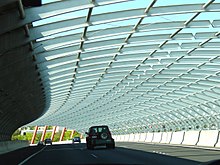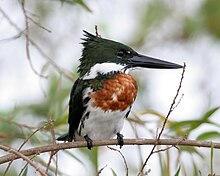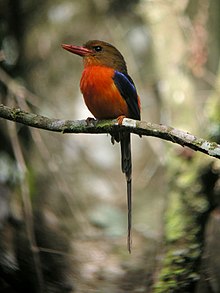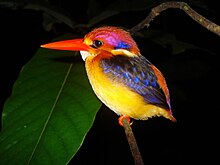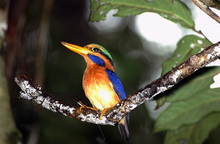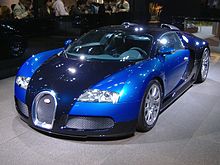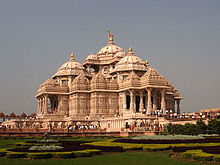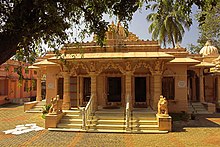Journalist
"Reporter" redirects here. For the legal term, see reporter (law). For the molecular biology term, see reporter gene. For works and publications with a similar name, see The Reporter.
- Newsman redirects here.

For other uses, see Journalist (disambiguation).
| Journalism |
|---|
| News · Writing style Ethics · Objectivity Values · Attribution Defamation Editorial independence Journalism school
List of
journalism articles |
| Areas |
| Arts · Business Entertainment Environment Fashion · Medicine Politics · Science Sports · Technology Trade · Traffic Weather · World |
| Genres |
| Advocacy · Analytic · Broadcast Citizen · Civic Collaborative · Community Database · Gonzo Investigative · Literary Muckraking · Narrative "New Journalism" Non-profit journalism Online · Opinion Peace · Photojournalism Scientific · Visual · Watchdog |
| Social impact |
| Fourth Estate Freedom of the press Infotainment · Media bias Public relations Press service Yellow journalism |
| News media |
| Newspapers · Magazines TV and radio Internet News agencies Alternative media |
| Roles |
| Journalists (reporters) Editor · Columnist Copy editor Meteorologist News presenter Photographer Pundit/Political commentator |
| Category: Journalism |
A reporter is a type of journalist who researches, writes, and reports on information to be presented in mass media, including print media (newspapers and magazines), electronic media (television, radio, documentary film), and digital media (such as online journalism). Reporters cultivate sources, conduct interviews, engage in research, and make reports. The information-gathering part of a journalist's job is sometimes called "reporting," in contrast to the production part of the job such as writing articles. Reporters may split their time between working in a newsroom and going out to witness events or interview people. Reporters may be assigned a specific beat or area of coverage.
Depending on the context, the term journalist may include various types of editors, editorial writers, columnists, and visual journalists, such as photojournalists (journalists who use the medium of photography).
Journalism has developed a variety of ethics and standards. While objectivity and a lack of bias are often considered important, some types of journalism, such as advocacy journalism, intentionally adopt a non-objective viewpoint.
Contents
|
Salaries and job outlook
The Henry W. Grady College of Journalism and Mass Communication at the University of Georgia has conducted its Annual Survey of Journalism and Mass Communication Graduates since 1997. According to its 2009 survey, the median salary earned by holders of either bachelor's or master's degrees in journalism and mass communication from colleges and universities in the United States (including Puerto Rico) entering the full-time job market in 2009 with $30,000. This was the same amount as in 2006, 2007, and 2008.According to the Occupational Outlook Handbook of the United States Department of Labor's Bureau of Labor Statistics, "employment of news analysts, reporters, and correspondents is expected to decline 6 percent between 2008 and 2018."The Occupational Outlook Handbook report that the median annual wage for news analysts, reporters, and correspondents in the United States was $34,850 in May 2008, with the middle 50 percent earning between $25,760 and $52,160, and the bottom and top 10 percent earning less than $20,180 and more than $77,480, respectively. Median annual wages for reporters and correspondents were $33,430 in "newspaper, periodical, book, and directory publishing" and $37,710 in "radio and television broadcasting."
Journalistic freedom
Journalists may expose themselves to danger, particularly when reporting in areas of armed conflict or in states that do not respect the freedom of the press. Organizations such as the Committee to Protect Journalists and Reporters Without Borders publish reports on press freedom and advocate for journalistic freedom. As of November 2011, the Committee to Protect Journalists reports that, 887 journalists have been killed worldwide since 1992 by murder (71 percent), crossfire or combat (17 percent), or on dangerous assignment (12 percent). The "ten deadliest countries" for journalists since 1992 have been Iraq (151 deaths), Philippines (72), Algeria (60), Russia (52), Colombia (43), Pakistan (41), Somalia (35), India (27), Mexico (27), and Afghanistan (24).The Committee to Protect Journalists also reports that as of December 1, 2010, 145 journalists are jailed worldwide for journalistic activities. The countries with the ten countries largest number of currently-imprisoned journalists are China (34 imprisoned), Iran (34), Eritrea (17), Burma (13), Uzbekistan (six), Vietnam (five), Cuba (four), Ethiopia (four), Turkey (four), and Sudan (three).
Role of journalism
Main article: Freedom of the press
In the 1920s, as modern journalism was just taking form, writer Walter Lippmann and American philosopher John Dewey debated over the role of journalism in a democracy. Their differing philosophies still characterize a debate about the role of journalism in society and the nation-state.Lippmann understood that journalism's role at the time was to act as a mediator or translator between the public and policy making elites. The journalist became the middleman. When elites spoke, journalists listened and recorded the information, distilled it, and passed it on to the public for their consumption. His reasoning behind this was that the public was not in a position to deconstruct the growing and complex flurry of information present in modern society, and so an intermediary was needed to filter news for the masses. Lippman put it this way: The public is not smart enough to understand complicated, political issues. Furthermore, the public was too consumed with their daily lives to care about complex public policy. Therefore the public needed someone to interpret the decisions or concerns of the elite to make the information plain and simple. That was the role of journalists. Lippmann believed that the public would affect the decision-making of the elite with their vote. In the meantime, the elite (i.e. politicians, policy makers, bureaucrats, scientists, etc.) would keep the business of power running. In Lippman's world, the journalist's role was to inform the public of what the elites were doing. It was also to act as a watchdog over the elites, as the public had the final say with their votes. Effectively that kept the public at the bottom of the power chain, catching the flow of information that is handed down from experts/elites.
Lippmann's elitism has had consequences that he came to deplore. An apostle of historicism and scientism, Lippmann did not merely hold that democratic government was a problematic exercise, but regarded all political communities, of whatever stripe, as needing guidance from a transcendent partisanship for accurate information and dispassionate judgment. In "Liberty and the News" (1919) and "Public Opinion" (1921) Lippmann expressed the hope that liberty could be redefined to take account of the scientific and historical perspective and that public opinion could be managed by a system of intelligence in and out of government. Thus the liberty of the journalist was to be dedicated to gathering verifiable facts while commentators like himself would place the news in the broader perspective. Lippmann deplored the influence of powerful newspaper publishers and preferred the judgments of the "patient and fearless men of science." In so doing, he did not merely denigrate the opinion of the majority but also of those who had influence or power as well. In a republican form of government, the representatives are chosen by the people and share with them adherence to the fundamental principles and political institutions of the polity. Lippmann's quarrel was with those very principles and institutions, for they are the product of the pre-scientific and pre-historical viewpoint and what for him was a groundless natural rights political philosophy.
But Lippmann turned against what he called the "collectivism" of the Progressive movement he encouraged with its de-emphasis on the foundations of American politics and government and ultimately wrote a work, "The Public Philosophy" (1955), which came very close to a return to the principles of the American founders.
Dewey, on the other hand, believed the public was not only capable of understanding the issues created or responded to by the elite, it was in the public forum that decisions should be made after discussion and debate. When issues were thoroughly vetted, then the best ideas would bubble to the surface. Dewey believed journalists should do more than simply pass on information. He believed they should weigh the consequences of the policies being enacted. Over time, his idea has been implemented in various degrees, and is more commonly known as "community journalism".
This concept of community journalism is at the centre of new developments in journalism. In this new paradigm, journalists are able to engage citizens and the experts/elites in the proposition and generation of content. It's important to note that while there is an assumption of equality, Dewey still celebrates expertise. Dewey believes the shared knowledge of many is far superior to a single individual's knowledge. Experts and scholars are welcome in Dewey's framework, but there is not the hierarchical structure present in Lippman's understanding of journalism and society. According to Dewey, conversation, debate, and dialogue lie at the heart of a democracy.
While Lippman's journalistic philosophy might be more acceptable to government leaders, Dewey's approach is a better description of how many journalists see their role in society, and, in turn, how much of society expects journalists to function. Americans, for example, may criticize some of the excesses committed by journalists, but they tend to expect journalists to serve as watchdogs on government, businesses and actors, enabling people to make informed decisions on the issues of the time.
The elements of journalism
According to The Elements of Journalism, a book by Bill Kovach and Tom Rosenstiel, there are nine elements of journalism. In order for a journalist to fulfill their duty of providing the people with the information, they need to be free and self-governing. They must follow these guidelines:- Journalism's first obligation is to the truth.
- Its first loyalty is to the citizens.
- Its essence is discipline of verification.
- Its practitioners must maintain an independence from those they cover.
- It must serve as an independent monitor of power.
- It must provide a forum for public criticism and compromise.
- It must strive to make the news significant, interesting, and relevant.
- It must keep the news comprehensive and proportional.
- Its practitioners must be allowed to exercise their personal conscience.
Professional and ethical standards
In the UK, all newspapers are bound by the Code of Practice of the Press Complaints Commission.This includes points like respecting people's privacy and ensuring accuracy. However, the Media Standards Trust has criticised the PCC, claiming it needs to be radically changed to secure public trust of newspapers.This is in stark contrast to the media climate prior to the 20th Century, where the media market was dominated by smaller newspapers and pamphleteers who usually had an overt and often radical agenda, with no presumption of balance or objectivity.
Failing to uphold standards
Such a code of conduct can, in the real world, be difficult to uphold consistently. Journalists who believe they are being fair or objective may give biased accounts—by reporting selectively, trusting too much to anecdote, or giving a partial explanation of actions. (See Media bias.) Even in routine reporting, bias can creep into a story through a reporter's choice of facts to summarize, or through failure to check enough sources, hear and report dissenting voices, or seek fresh perspectives.A news organization's budget inevitably reflects decision-making about what news to cover, for what audience, and in what depth. Those decisions may reflect conscious or unconscious bias. When budgets are cut, editors may sacrifice reporters in distant news bureaus, reduce the number of staff assigned to low-income areas, or wipe entire communities from the publication's zone of interest.
Publishers, owners and other corporate executives, especially advertising sales executives, can try to use their powers over journalists to influence how news is reported and published. Journalists usually rely on top management to create and maintain a "firewall" between the news and other departments in a news organization to prevent undue influence on the news department. One journalism magazine, Columbia Journalism Review, has made it a practice to reveal examples of executives who try to influence news coverage, of executives who do not abuse their powers over journalists, and of journalists who resist such pressures.
Self-censorship is a growing problem in journalism, particularly in covering countries that sharply restrict press freedom. As commercial pressure in the media marketplace grows, media organizations are loath to lose access to high-profile countries by producing unflattering stories. For example, CNN admitted that it had practiced self-censorship in covering the Saddam Hussein regime in Iraq in order to ensure continued access after the regime had thrown out other media. CNN correspondent Christiane Amanpour also complained of self-censorship during the invasion of Iraq due to the fear of alienating key audiences in the US.
Legal status
Main article: Freedom of the press
Governments have widely varying policies and practices towards
journalists, which control what they can research and write, and what
press organizations can publish. Some governments guarantee the freedom
of the press; while other nations severely restrict what journalists can
research and/or publish.Journalists in many nations have some privileges that members of the general public do not; including better access to public events, crime scenes and press conferences, and to extended interviews with public officials, celebrities and others in the public eye.
Journalists who elect to cover conflicts, whether wars between nations or insurgencies within nations, often give up any expectation of protection by government, if not giving up their rights to protection by government. Journalists who are captured or detained during a conflict are expected to be treated as civilians and to be released to their national government.
Right to protect confidentiality of sources
Main article: Protection of sources
Journalists' interaction with sources sometimes involves confidentiality, an extension of freedom of the press giving journalists a legal protection to keep the identity of a confidential informant private even when demanded by police or prosecutors; withholding sources can land journalists in contempt of court, or in jail.In the United States, there is no right to protect sources in a federal court; Though federal courts will refuse to force journalists to reveal sources, unless the information the court seeks is highly relevant to the case, and there's no other way to get it. State courts provide varying degrees of such protection. Journalists who refuse to testify even when ordered to can be found in contempt of court and fined or jailed.
Genres
Main article: Journalism genres
Some forms include:- Advocacy journalism - writing to advocate particular viewpoints or influence the opinions of the audience.
- Broadcast journalism - writing or speaking which is intended to be distributed by radio or television broadcasting, rather than only in written form for readers.
- Investigative journalism - writing which seeks to add extra information to explain, or better describe the people and events of a particular topic.
- Tabloid journalism - writing which uses opinionated or wild claims.
- Yellow journalism (or sensationalism) - writing which emphasizes exaggerated claims or rumors.
